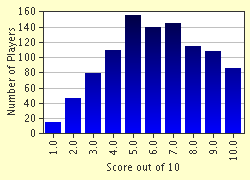Quiz Answer Key and Fun Facts
1. The Greeks were victorious in this battle against the Persians, but this did not guarantee the safety of Athens. A runner was dispatched from the battlefield to warn the city to prepare its defense. Where was this battle, which gave its name to an Olympic event?
2. This battle may be said to have been Alexander the Great's first major victory against the Persian Empire.
3. The Persians were advancing on Greece with the biggest army ever seen, and the Greeks needed time to muster their troops. Three hundred men took a suicidal stand to hold the Persians off and buy time for the Greeks. This battle became one of the most inspirational stories in military history. Where was it fought?
4. This battle is said to be one of Julius Caesar's greatest victories, and effectively marked the end of significant Gallic resistance to Roman rule.
5. Flaminius was caught completely unawares by Hannibal in this battle, which took place in 217 BCE.
6. The decision to fight this naval battle was made on the basis of a prediction made by the Oracle at Delphi.
7. Ramses II 'the Great' and Muwatallis of the Hittites faced off in one of the biggest chariot battles ever fought. Both sides claimed victory, but where did this battle between the two greatest empires of the day take place?
8. Fought in 216 BCE, this battle saw the Carthaginians overcome superior numbers to win the day.
9. This city was besieged for seven months, and bravely struggled to survive. When it eventually fell, its attackers were so enraged by its tenacity that they destroyed most of the city, and those who survived the ensuing massacre were sold into slavery.
10. Mark Antony and Octavian squared off in this sea battle, to decide who would rule Rome.
Source: Author
_elbereth_
This quiz was reviewed by FunTrivia editor
bloomsby before going online.
Any errors found in FunTrivia content are routinely corrected through our feedback system.

